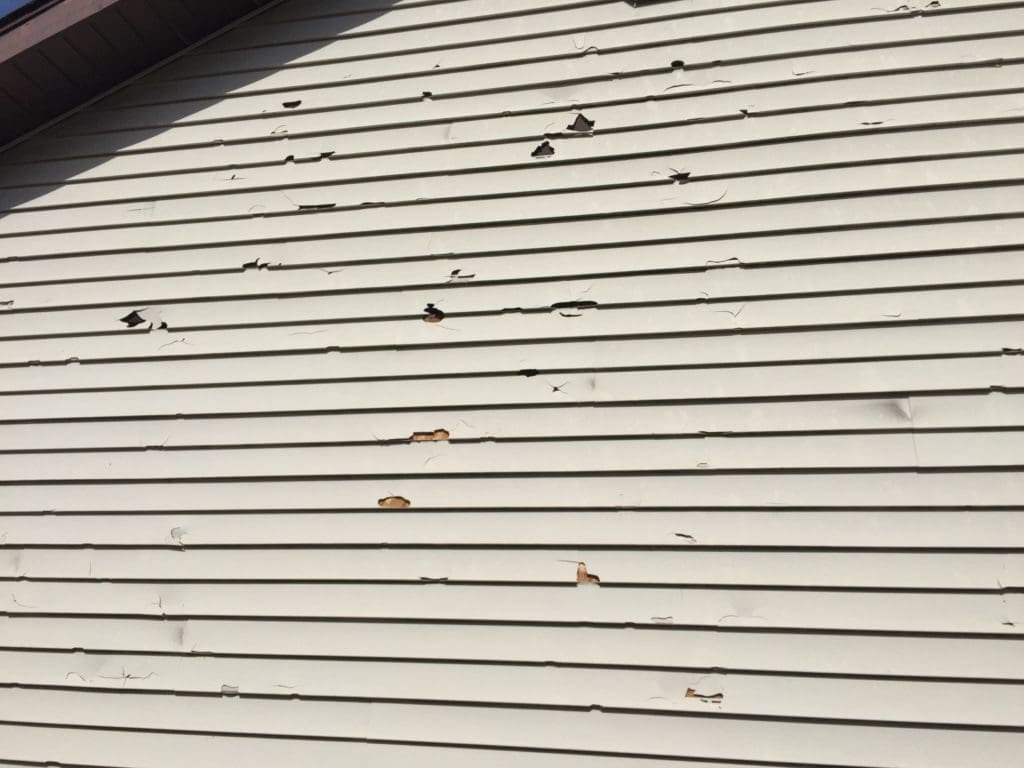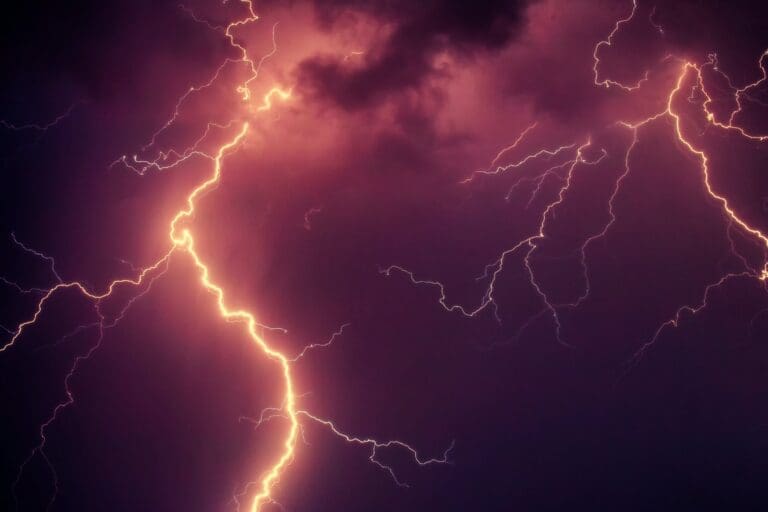Siding does much more than simply add to the curb appeal of your home. A home’s siding protects your home from the elements, keeping your home’s framing, insulation, electrical, drywall, and other sensitive areas protected from moisture. Sitting at the base of the foothills, Rapid City, South Dakota faces diverse weather conditions, whether it be the constant wind in Rapid Valley or the random hail storms that visit the Black Hills every Spring, Summer, and early Fall. While siding manufacturers and home builders work to ensure your home’s siding stands the test of time. Unfortunately, every type of building material has a lifespan, which is no different for exterior siding. This is especially true if your home has experienced recent extreme weather. If you suspect your home may need new siding, it may be time to look at signs of siding damage.

Signs of Siding Damage
Left untouched by nature, a home’s exterior siding could last for many years. Of course, this is not reality, as every home faces harsh weather and battles father time. When it comes to damage from extreme weather, the worst element is typically water. Water can find multiple ways to damage your home’s exterior, such as damaging paint, warping and cracking wood, and more. If lumber siding has water making its way behind it, the paint will begin to discolor as physical properties become compromised. If the problem has existed for a decent amount of time, mold, mildew, and wood rot will be visible.
Signs of damaged siding due to fading and discoloration include a loss of the original vibrant color, a washed-out appearance, or uneven coloration. This can occur over time due to exposure to the sun’s UV rays or harsh weather conditions.
Damaged siding may exhibit cracks, splits, or peeling paint, indicating that the material has deteriorated. These issues can lead to water infiltration and further degradation of the siding.
Warping or buckling of siding can be a result of heat exposure, moisture absorption, or improper installation. It’s characterized by a wavy or uneven surface, and it compromises the structural integrity of the siding.
The presence of mold, mildew, or rot on siding is a clear sign of damage. These organisms thrive in damp conditions and can cause the siding to decay, leading to structural problems and health hazards.
Siding panels that are loose, hanging, or completely missing are evident signs of damage. This can occur due to severe weather, poor installation, or the aging of the siding material. It leaves the exterior vulnerable to water infiltration and pests.
Weather Conditions in Rapid City, South Dakota

Choosing the right exterior siding product depends on the local climate and environment where your home resides. The Black Hills are known for its erratic and sometimes extreme weather. On the same day, you could have rain, snow, and sunshine. Rapid City sits in a precarious position between the Black Hills and the plains and depending on what area of the city you live in, could determine if you experience a few inches of snow or a few feet, or large hail and pea-sized hail. Due to Rapid City’s unpredictable weather, a home’s exterior lifespan is often shorter. However, this can be mitigated by installing high-quality materials that are specifically designed to stand up to harsh weather environments.
Advantages of Replacing Siding
There are numerous advantages when you replace your home’s siding. In most cases, siding replacement requires upgrading house wrap and other flashing materials. Upgrading these materials will undoubtedly help improve your home’s energy efficiency. Also, choosing new colors and styles for your home’s siding will enhance your curb appeal, leaving you happy while also increasing your home’s property value. By updating your siding to the latest materials and technology, you will be able to prevent further damage, maintaining the look and feel you have always desired.
Factors to Consider When Replacing Siding
There are many things to consider when you are replacing siding for your home. Do you want to stay with your existing color scheme? Or, would you like to update your home’s curb appeal with a blend of colors that is in line with today’s trends? Firstly, homeowners should take into account their color and style preferences to ensure the new siding complements the overall aesthetic of their property. Why install new siding solely for its functionality when you can improve your home’s curb appeal? Next, the maintenance requirements should be taken into consideration; some siding materials demand more upkeep than others, and this choice should align with your willingness and ability to maintain the siding. Lastly, investigate the warranty and expected lifespan of the chosen siding to guarantee its longevity and peace of mind in terms of durability and performance over time. Carefully weighing these factors will help homeowners make an informed decision when replacing their siding.
Choosing the right siding material
Without a doubt, most would agree that the material selection process is the most important factor in determining how long your home’s siding will last. Each siding type has its benefits and disadvantages, let’s take a look at some of them.
Vinyl siding is cost-effective and can last for many years since it is not susceptible to damage from water. However, if you experience a strong hail storm, vinyl siding may not last as it is brittle and susceptible to damage from strong impacts.
Aluminum siding is impervious to UV, rust, and water damage and can last for many years. Like Vinyl siding, aluminum siding is at risk of denting from hail or falling tree branches and may need replacement after a strong storm.
Lumber siding is a tried and true siding product that has stood up to the test of time. Lumber siding can take strong impacts from medium to large-sized hail without any physical damage to the lumber, excluding paint. If there is water penetration, lumber siding is typically the first siding type to show signs of damage.
Fiber Cement siding does not absorb water as lumber siding can which helps the siding panels last much longer than typical wood siding products. On the other hand, fiber cement siding can crack due to improper installation or impact damage.
Siding Replacement Summary
As you can see, there are many things to consider when deciding whether it’s time to replace your home’s exterior siding. Homeowners must recognize issues like fading, cracks, warping, mold, and missing panels. Prompt action is necessary when these signs appear, as neglecting siding issues can lead to more significant and costlier problems down the road. To navigate the siding replacement process effectively, homeowners should consider seeking professional guidance. Ghost Canyon Exteriors, with its expertise and experience in Rapid City, can offer valuable insights and solutions. Our assistance can ensure that the right siding material, color, and style are chosen to enhance the property’s value and protection while withstanding the region’s unique weather challenges. Ultimately, investing in quality siding not only improves a home’s curb appeal but also safeguards its longevity and structural soundness.
Are you ready to take your home’s exterior to the next level? Contact Ghost Canyon Exteriors for a free estimate on all siding projects.